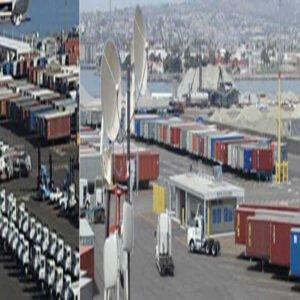Real-Time Location System (RTLS)- One Technology. Infinite Possibilities
 Real-time locating systems (RTLS), sometimes known as real-time tracking systems, are used to automatically identify and track the location of objects or persons in real-time, usually within the confines of a building or other enclosed environment. Fixed reference points receive wireless signals from tags to identify their location in most RTLS systems. Wireless RTLS tags are affixed to items or worn by individuals. Tracking autos through an assembly line, identifying pallets of items in a warehouse, and detecting medical equipment in a hospital are all examples of real-time locating systems.
Real-time locating systems (RTLS), sometimes known as real-time tracking systems, are used to automatically identify and track the location of objects or persons in real-time, usually within the confines of a building or other enclosed environment. Fixed reference points receive wireless signals from tags to identify their location in most RTLS systems. Wireless RTLS tags are affixed to items or worn by individuals. Tracking autos through an assembly line, identifying pallets of items in a warehouse, and detecting medical equipment in a hospital are all examples of real-time locating systems.
Radiofrequency (RF) transmission is frequently used as the physical layer of RTLS technology. Optical (typically infrared) or acoustic (usually ultrasound) technology is used in conjunction with, or instead of, RF in some systems. RTLS tags and fixed reference points can function as transmitters, receivers, or both, allowing for a wide range of technological combinations.
RTLS stands for real-time local positioning system, and it does not always refer to GPS or cell phone tracking. Speed, direction, and spatial orientation are frequently not included in location data.
Suraj Informatics RTLS gives you the freedom to develop your own digitalization plan and expedite your production and logistics transformation.
BENEFITS:
Quickly deploy RTLS with little configuration.
Real-time asset tracking is possible.
View the position and movement of assets over time.
Asset events should be automatically alerted to users.
Using a web browser, look for information on the place.
RTLS –With Yard Operations
Over the last six years, Real-Time Locating Systems (RTLS) have evolved as a cost-effective solution for tracking the position and status of assets in local locations, such as yards and remote storage and delivery facilities.
Other forms of automatic identification technologies differ in that tagged assets do not need to be scanned or pass close to a reader to be identified. RTLS tags, on the other hand, broadcast their IDs and status information to a central processor at regular intervals through a low-power radio signal, which computes the location of thousands of tagged assets within yards and remote sites.
Take advantage of the digital future
Suraj Informatics Real-time locating systems (RTLS) create a digital twin of all your processes, from delivery through processing and final assembly. How? For starters, a transponder is installed on all necessary objects in a facility or warehou
